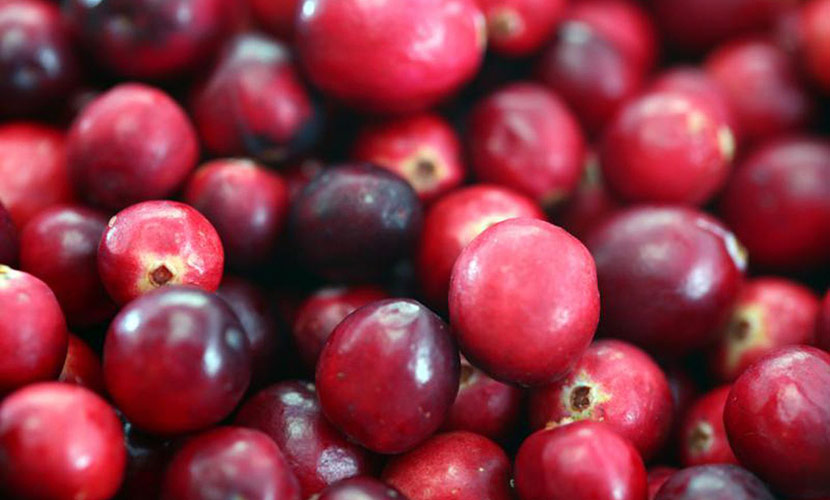
Just in time for Thanksgiving, we are having a GeriPal podcast episode dedicated to the humble cranberry.
We discuss the use of cranberries to preventing urinary tract infections with Dr. Manisha Juthani-Mehta. In addition to hearing about something called proanthocyanidin, we discuss her recent publication in JAMA on whether cranberry capsules decrease the presence of bacteriuria plus pyuria in older women living in nursing homes (spoiler alert – they don’t).
If you want to read more about the paper, as well as a Cochrane review summarizing the evidence for cranberries to prevent urinary tract infections, please check out the following:
- Juthani-Mehta M, et al. Effect of Cranberry Capsules on Bacteriuria Plus Pyuria Among Older Women in Nursing HomesA Randomized Clinical Trial. JAMA. 2016;316(18):1879-1887.
- Jepson RG, et al. Cranberries for preventing urinary tract infections. Cochrane Database Syst Rev. 2012;10:CD001321.
by: Eric Widera (@ewidera)
Eric: Welcome to the GeriPal Podcast. This is Eric Widera.
Alex: This is Alex Smith.
Eric: And Alex, we have a special guest with us today.
Alex: Who do we have today, Eric?
Eric: So we have Dr. anisha Juthani-Mehta, who’s with us. And can you, Manisha, just describe where you are and what you do? anisha: Absolutely! So I’m a faculty member at Yale School of Medicine. I’m an infectious diseases specialist. I’ve been doing research on infections in older adults for about the last 14 years and I’m also the ID (Infectious Diseases) Fellowship Program Director here.
Eric: And you have written a lot on geriatrics and
palliative care infectious disease issues, especially writing about UTIs in older women. I
remember a 2014 JAMA article. That is one of my favorite articles when it comes to UTIs and
how to think about them in older adults. Is that right? anisha: Well thank
you! I’ve never thought of myself as haven written so much, but it’s nice to have a fan and
somebody who actually knows your work.
Eric: We just had journal club on one
of your articles, “The Effect of Cranberry Capsules on Bacteria Plus Pyuria Among Older Women
in Nursing Homes”, just published in JAMA late last month.
Alex: It’s
topical! It’s Thanksgiving!
Eric: It is Thanksgiving time. anisha: Exactly, that’s why I think it’s so timely, because people obviously are
thinking about all the cranberry products that they love at Thanksgiving time.
Alex: It also stirred a little bit of a controversy online, but maybe before we get to
that, we can just talk a little bit about why you decided to study this. anisha:
Absolutely. So as you know, UTIs are certainly the most common infection diagnosed in
older women in nursing homes. One of the main challenges is that it’s so difficult to
differentiate asymptomatic bacteria from a symptomatic UTI population because of the
challenges with deciding what’s a real symptom and what really is a clinically important UTI
that deserves antibiotic treatment. And so I spent a number of years trying to figure out
better ways to prevent, to diagnose, to manage UTIs and I started a couple of different pilot
studies. The first one was looking at the feasibility of cranberry capsules in this
population. And the reason we got there in the first place is because of a 1994 JAMA paper
that looked at cranberry juice cocktail for prevention of UTI in older nursing home women.
That particular study, which was conducted in assisted living facilities and in
nursing home residents showed that 10 ounces of cranberry juice cocktail was effective at
reducing bacteria and pyuria in that population. But the reality is that it’s so hard for so any women to actually drink 10 ounces of cranberry juice cocktail. Some of them complain
about the taste, some of them don’t like the glucose load, some of them are just are trying
to avoid hydration, period, because of incontinence. And so this is why the idea of capsules
was an appealing alternative.
Alex: Right, so you made these capsules. And
how similar or different are the capsules from the kind of like folklore medicinal remedy out
there of cranberry juice? anisha: So this is some of the challenge in the
capsule literature and the capsule space in general. Capsules in the United States are not
really regulated by the FDA. The FDA has some general guidance out there but there are anufactures that make products on the market that have all different combinations of what is
in the capsule. Is it the actual full cranberry itself? Is it a component of the cranberry?
And prior literature showed that 10 ounces of cranberry cocktail juice had 36 milligrams of
proanthocyanidin, which is a type of tannin, or PAC for short.
So
proanthocyanidin. P-A-C. So PAC was what is thought to be the important ingredient in
cranberry juice, and it is thought to inhibit binding of e. coli to your epithelial cells or
to bladder wall cells. So I used a product that specifically had 36 milligrams of PAC in one
capsule. And the reason I did that was to try to mimic the juice trial that actually showed
to be a benefit. Then based on a dosing study that I had done before this particular trial,
it looked like we had a dose-dependent effect, where we looked at zero, one, two and three
capsules, cranberry capsules with 36 milligrams of PAC in each one. And it looked like two
capsules was the best dose to test. It seemed that we had more inhibition going on. It also
seemed like that was the best dose that patients actually could take, and that’s why we ended
up testing the equivalent of 20 ounces of cranberry juice cocktail, so double what the 1994
study showed, or 72 milligrams of PAC.
Alex: This point you make about what,
proanthocyanidin … Say that five times fast. Proanthocyanidin. Proanthocyanidin. PAC,
right? … is that it inhibits binding of e. coli, which is the bacteria, most commonly, that
causes UTIs. It inhibits the binding of that bacteria to the bladder wall. This is an
important point that you bring up and I wonder whether that would affect bacterial
replication within the bladder. In other words, does the bacteria need to bind to the bladder
wall in order to proliferate and cause bacteria? Or is there something about the binding of
the bacteria to the bladder wall that causes symptoms? anisha: Right, so I ean I think that’s one of the challenges and nuances of this type of study. So to your
point, this is supposed to inhibit binding, which is what is thought to then lead to an
inflammatory response, more white blood cells, potentially then symptoms or what would
potentially be an invasive cystitis or bladder infection. And so that’s why binding has
always been thought to be important in this whole pathway of UTI. The challenge in the study
is what we did was look for whether the bacteria were present in the urine. So whether they
were actually binding or not is difficult to tell, but certainly if they are present they
could bind. And so that has always been a surrogate in all UTI research, is the presence or
absence of these bacteria in the urine.
Eric: So just to restate what you
did. This was a double blind, randomized, placebo-controlled study. So one group got placebo,
the other group got these two oral cranberry capsules. They were nursing home patients. They
were women. And they were English-speaking and all had to be 65 years and older. A whole
bunch of nursing homes -21 different nursing homes near New Haven. What did you guys find? anisha: We screened over 5,000 patients in these 21 nursing homes. We enrolled
185 women and one of the biggest reasons that women were not able to be enrolled was because
they just could not provide a clean-catch urine specimen. We were not allowed to catheterize
patients to obtain urine specimens, because when you catheterize the patient, you could
introduce an infection, and because these specimens were all collected when patients were
asymptomatic, we couldn’t justify that.
So we collected clean-catch
specimens at baseline, and every two months, so a total of six other specimens, for the
course of a year. And unfortunately, what we found was that the rate of bacteria plus pyuria
in both groups … in the control group and in the active cranberry capsule group … was
basically the same. So we controlled for a number of variables, but despite that, we were not
able to show that over the course of a year there was any benefit.
Eric: You
know, the adjusted results seemed like that one of the primary findings … In a randomized
control study, why the major focus on the adjusted results rather than just un-adjusted? anisha: It’s interesting you ask that, because the un-adjusted results, which
are also there in the supplement,that was actually what we wanted to present, because I think
it’s just intuitive for people to understand the un-adjusted results, which were also not
significant. But in our statistical analysis plan, which was in the grant, in the protocol,
all from the beginning, it was the adjusted results that were our primary outcome. And the
reason that that’s also important is that we took into account the level of incontinence, the
amount of missing data that we had, so there were participants who could’ve provided one or
two specimens, and they may have missed a specimen, then they may have provided another one,
or any combination of that over the course of the entire study.
We also had
people that dropped out because either they became hospice or died, or for other reasons
decided they didn’t want to take the capsules anymore. So to be able to account for all of
that missing data, the adjusted analyses were important. What the adjusted analyses showed
though was that it even brought the data more to the null.
Alex: You know, I
want to ask also about the secondary outcomes that you looked at and specifically things like
hospitalizations, gram negative bacteria, antibiotics for a suspected UTI, total anti- icrobials. And if you just look at the numbers, yes, there are no statistical differences.
But if you look at the percentages among treatment group for hospitalizations … 40% rate
per hundred person years versus the control group, 60%. Antibiotics for suspected UTI. 8% in
the treatment group versus 11% in the control group.
Eric: You know, when we
were talking about this in journal club it kind of struck us that there may be something here
and that something may have more to do with symptomatic concerns that raise a level of
hospitalization or antibiotic treatment, but we’re just not … We may not have the power to
detect it or something along those lines. What are your thoughts about that? anisha: One of the reasons that we couldn’t adjust for the secondary outcomes the
same way that we did for the primary outcomes was because there was just a lot of variability
in terms of the numbers of each of the different outcomes and each of those different
categories that we looked at. And so there were a lot of confounders that actually …
looking at adjusted results would’ve been very deceptive. So what we presented were the raw
numbers essentially, and the adjusted results.
And you’re absolutely right.
It looks like, well, could there have been something there? Is there something that we’re not
seeing? That’s certainly possible, that if we had had a larger sample size, could that be the
case? If you look at symptomatic UTIs alone, using a very strict definition, ten versus
twelve symptomatic UTIs, we obviously didn’t find any difference there. And that included
people who were hospitalized or who were just treated in the nursing home alone. But I think
that the secondary outcomes, although the numbers were in that direction, I just think that
the level of co-morbid disease at baseline for these groups was different. And we couldn’t do
statistical comparisons there, just because there’s too many different co-morbid conditions
on which to compare.
Alex: I’m kind of bummed about these results. I was
hoping that cranberries, cranberry juice, cranberry capsules, proantho blah blah blah, PAC,
whatever it is, would be effective because this is … It’s practically harmless. It’s easy
to take. It’s pretty cheap. It doesn’t spread antimicrobial resistance. How did you feel when
you unblinded these results? anisha: I had several emotions, which I will
tell you about. So the first is … Obviously I’ve spent probably about eight years of my
life studying this, so certainly I was hoping for a positive result. I think that as you
said, it’s a relatively harmless intervention and I was hopeful that for an infection that is
so hard to diagnose and leads to over-prescription of antibiotics, that this would be a
simple intervention that maybe could make a difference in these patients’ lives. So certainly
I was disappointed.
Having said that, I think that the cranberry capsule
industry you’ve talked about is relatively cheap. Capsules in the free marketplace, or if you
look at, let’s say, a month’s supply could be anywhere from something like six, seven, eight
dollars, up to 200 dollars a month. And a lot of that has to with what is actually put in
those capsules. Half the time I don’t think consumers really know what’s in them because they
can market things without it having to be validated in a way that medications have to be. And
so I think that consumers are a little bit victimized, I believe. And so I have had multiple
patients, from people who have emailed me, who’ve given me anecdotal advice, and their own
experiences, and there are people who feel strongly that they work for them. That whatever
brand of product that they use really works for them. If they start taking it before getting
a UTI or when the symptoms first start or something along those lines, that the capsules
really work for them.
I think that … My fundamental feeling is that
cranberry products have been used and were used by Native Americans for thousands of years.
When the pilgrims and first settlers came to the United Sates, they learned how to use the
cranberry, which was one of the few fruits native to North America. They learned how to use
it for a number of purposes, whether it be to prevent scurvy, whether it be to barter with
Europe, and whether it be to prevent or treat urinary tract specific symptoms.
So I think that there are many women who will say that if they get symptoms of a UTI, if
they start drinking cranberry juice, it will alleviate the symptoms. And so I have to believe
that there’s some anti-inflammatory effect or something that we have not identified in
studies when we’re looking at how much bacteria is in the urine. That’s what most of the end
points for most of the studies have been out there. If we look at that end point, most of the
data does not suggest it works. But if we look at anecdotal information about what women say
helps them, it seems that cranberry juice may prevent some of the burning that comes with the
UTI.
Eric: So I got a question. I’ve never heard of Big Cranberry before but
I saw a press release from the Cranberry Institute that took … What’s the right word?
Alex: Took issue? Took umbrage?
Eric: Yeah. anisha:
Yes, I think would be fair.
Eric: I saw a press release from the
Cranberry Institute that took issue with this study, and especially with the accompanying
editorial, which basically said it’s time to move on from cranberries for preventing urinary
tract infections. anisha: That’s correct.
Eric: Your thoughts or response to that? anisha: So I have to say that given that this was a negative trial, I did not anticipate so much interest in this trial. I thought that there might’ve been more interest if there was a positive study, but I think the concept of debunking a myth was interesting to many people in the lay press and was very disturbing to people in the cranberry industry. In terms of moving on from cranberries, I think it’s fair to say that what we tested in our trial was cranberry capsules with a very high PAC content in nursing home women. And I think in my opinion, it is fair to say it’s time to move on from cranberry in that population.
Eric: What do you think about the idea that this study did not test it in the right population, not those individuals with recurrent UTIs, but just women living in nursing homes who are older? anisha: Yeah, so I tried to do that in the dosing study that I did. What I did was, I said only if you have a history of UTI and I defined that very loosely and broadly, which was … If you had documentation of you were treated for UTI in the last year, only then could you be enrolled in the study. And it’s very interesting. People who have done research, a lot of people have found this. The minute you start studying a disease, it goes away. It’s the best way for an illness to be cured is just to study it. So enrolling people with a history of UTI was virtually impossible. Now look at what we did in our study. We screened over 5,000 women and we didn’t even make history of UTI a requirement. I should correct myself, not 5,000 women, but over 5,000 nursing home residents. Some of those were men, so they were excluded because they were men. So again, what we were looking at was asymptomatic bacteria. That’s really what we were looking at. That was our primary outcome. So it would’ve taken hundreds of nursing homes throughout the United States, for a much longer period of time probably, to be able to test that specific question. I think that that question has been tested in younger populations, in other age groups of women, and I do think that the vast majority of literature that’s out there using either juice or capsules … The really good, well-done studies … has more pointed in the direction of “it doesn’t work.” I think that one of the trials done in the last five years or so looked at a placebo drink and a cranberry juice cocktail drink and the rate of UTI went down in both arms, which would again suggest that hydration was a major factor. That just by hydrating, that is enough to drive down the rate of UTI in this population. So I think that my study in and of itself, I don’t think gives enough information in terms of moving on from cranberries. I do think that there are a lot of other studies though that have already suggested that in other populations.
Eric: Was bacteria plus pyuria the right outcome to look at? anisha: The 1994 study, that was the outcome they looked at. And that was the main study that really sent the cranberry industry off in terms of success for UTI prevention. And so one of the thoughts I have was that if we didn’t use the exact same outcome that they used and had a positive result, we’d be critiqued for the fact that we had the wrong outcome. So I think that it is a challenge. I think symptomatic UTI would’ve been the ideal outcome, but the problem is that they’re so few and far between that it would’ve required thousands of patients. So I think it’s the best surrogate we have in a population that’s very difficult to diagnose UTIs to begin with.
Alex: Great. All right, last question here. What cranberry product, if any, do you have at Thanksgiving? anisha: Well I like a bunch of different cranberry products, but I like syrups and sauces and things like that. But I’m open to all kinds of cranberry … I like dried cranberries in salads. I like cranberry juice cocktail personally. I like cranberry juice in with selzer so. I’ll try a number of different things. Whatever’s available.
Alex: Eric? Do you …
Eric: I got a question. Can I continue to eat Craisins? anisha: Absolutely! I love Craisins! I mean …
Alex: Craisins are great, but you know, there’s a ton of sugar in them. anisha: I tell people all the time, “You should eat …” I mean see one of the things about the juice and dried cranberries and craisins, things like that, is that you at least enjoy them in the process. The thing about the capsules is there’s really not much enjoyment. I mean, the reason you’re taking them for a presumed health benefit. So that’s my main dissatisfaction with it, and disappointment with it quite frankly. I wanted it to work.
Alex: Yeah, our Thanksgiving tradition is that my mom would open up a can of cranberries, canned cranberries …
Eric: Ooh, and as it turns around and comes down as one solid…
Alex: One solid gel mass that then gets sliced into little round circles.
That is our Thanksgiving tradition. Cranberry in a can. anisha: Once a year.
Eric: Thank you very much for joining us today.
Alex: Thank you so much Manisha. This was treat. anisha: Thanks for having me.
Eric: So Alex, do you want to end this with maybe a song about cranberries?
Alex: Sure, so this a song by The Cranberries.
Eric: Ah, I should’ve known!
Alex: Right, so I think this is called “Linger”. I am unable to sing like The Cranberries. Let’s just be clear. But I got a little bit of the chorus.
Alex plays “Linger” by The Cranberries.



